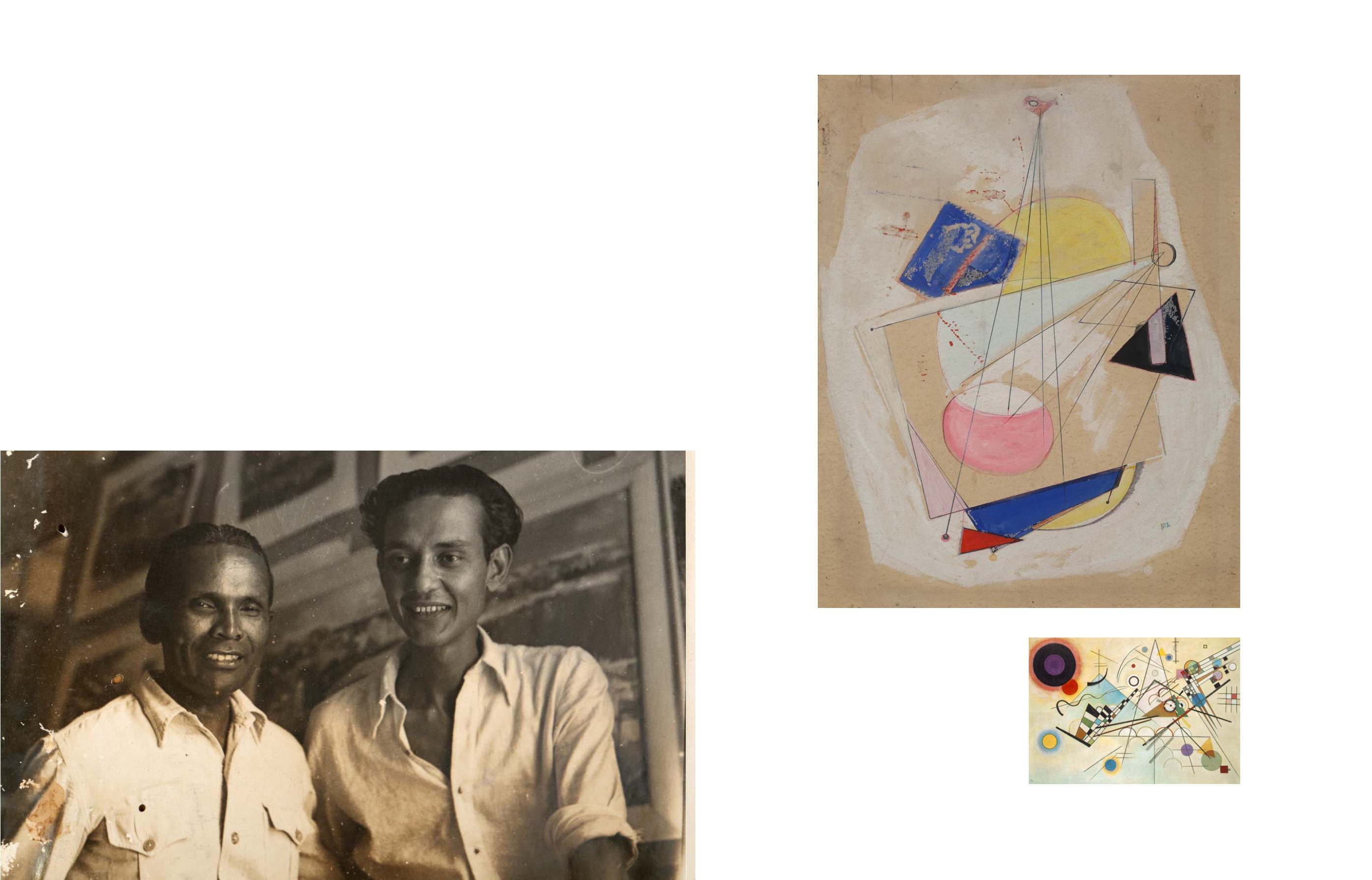

192
Saffronart | Evening Sale
Ara and Raza
Image courtesy of Ruxana Pathan
The present lot offers a rare and important glimpse into the
early years of thought and experimentation that informed
the artist’s journey. By the early 1940s, there was a particular
interest in Cubism among Indian artists, with a particular
affinity towards the ideas of Klee and Kandinsky. A show of
original modern paintings in Calcutta in December 1922 had
included the works of teachers and students of the German
Bauhaus, which spawned this initial interest in new ways of
thinking about art. “Now utter simplification, reducing form
to bare essentials and undisturbed straight line and plain
surfaces become the norms of beauty.” (Ratan Parimoo,
“Cubism, World Art and Indian Art,” circa 1968, p. 4,
Asia
Art Archives
, online) Unlike in the West, where Cubism was
a deeply developed and intellectual movement, “for Indian
painters cubism was a ready-made language from which
borrowings could be freely made.” (Parimoo, p. 5)
Ara was a largely untrained artist who “did some evening
work in a studio doing... object drawings, passed a Teacher’s
examination and painted under all sorts of influences.”
(Rudy von Leyden, “Ara,”
Critical Collective
, online) Against
this background, it is especially significant to see the precise
construction and intent towards composition that is
displayed in the present lot. It is evidence of Ara’s interest in
revealing the essential structure behind a visible form. With
an eye toward Constructivism and symbology, Ara includes
planes and geometric shapes, drafted perspectives, primary
colours and the bird motif so often seen in the symbology of
Kandinsky and Klee. It is not well known that in November
1963, Ara had an exhibition titled
Poems on Canvas
.
“Occasionally Ara has tried his hand at “abstract” or non-
objective painting... Once he held an exhibition of almost
bare canvases slashed by a blade to create rhythmic designs
which were meant to interpret Urdu poems.” (Leyden)
Though Ara’s later work focuses on more traditional nudes
and still-lifes, one can see the precise, underlying interest in
geometry that defines the composition and placement of
objects on the canvas.
193
Wassily Kandinsky,
Composition 8
, 1923
Source: Wassily Kandinsky [Public domain], via Wikimedia Commons
72
K H ARA
(1914 ‒ 1985)
Untitled
Signed ‘ARA’ (lower right)
Gouache on paper
23.25 x 18.75 in (59.3 x 47.8 cm)
Rs 7,00,000 ‒ 9,00,000
$ 10,610 ‒ 13,640
PROVENANCE:
Collection of the artist’s family


















